For every mommy, above all, the safety of her child. This is especially true for such a rather traumatic occupation as cycling. In this situation, a helmet comes to the rescue. His presence will not only protect the baby, but also reassure parents.
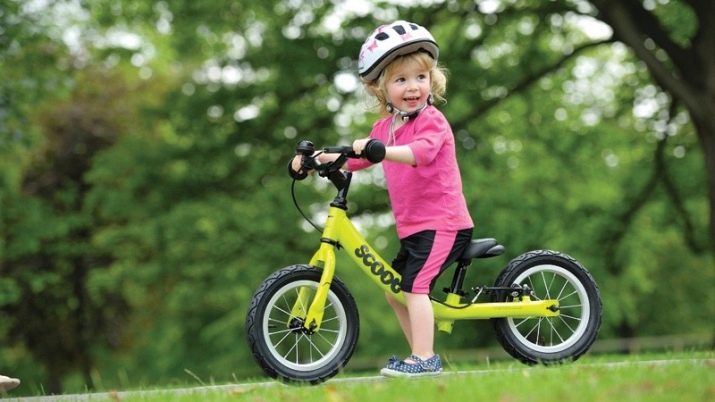
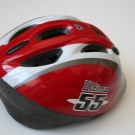
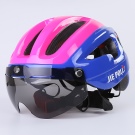
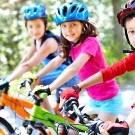
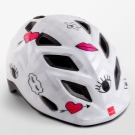
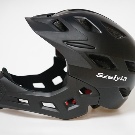
What is it needed for?
It is no secret that both children and adults need a bicycle helmet primarily for protection. This is equally true for toddlers aged 2-3 years, and for older children who are mastering the art of riding a two-wheeled bicycle. Any improper movement can provoke a fall, and this product will significantly soften the blow to the head, which in some cases can be extremely important.
The helmet may have a visor that protects the face, and protection for the chin.
If the baby is just learning to ride a bike, falls will be present even with maximum care. Psychologically, it will be quite difficult for him to understand how you can enjoy a lesson that can hurt, so protection is very important.
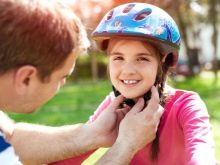


Dimensions and Weight
The helmet does not interfere with a child of any age who sits behind the wheel of a bicycle. Manufacturers offer this product for babies over 1–1.5 years old. The fact that so that children are as comfortable as possible.
Accordingly, it is necessary to choose a product that is suitable in size that will not squeeze your head or fall on your eyes.
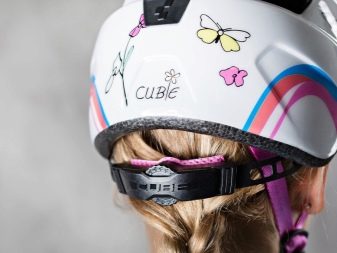

The main sizes offered for children are M and S, having a circle of 50–55 and 45–50 centimeters, respectively. It is best to try on a helmet for a child immediately before purchase to make sure that it does not cause discomfort.
These products are quite lightweight, although they are designed for both adults and children. Their maximum weight is 300 grams. Models are selected with an eye on the age of the child. Excess weight adversely affects the cervical spine, creating an extra load, so at the moment, special attention should be paid.

Production material
No one will argue that the quality of this accessory should be at the highest level, since it is primarily about health. Now consumers often opt for a bicycle helmet with a special coating of EPS foam or polypropylene.
It helps to disperse the blow and allows the main part to remain intact longer. The highest quality coating is considered to be from this foam.
There are other options, but they can be seen much less often. To make the head more comfortable, soft pillows are located in the center of the helmet. Visually, they resemble a sponge. They do not carry out a protective function, but provide comfort to the baby's head.
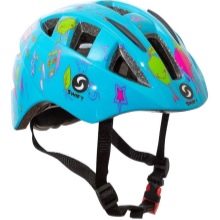
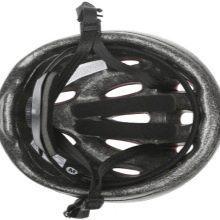
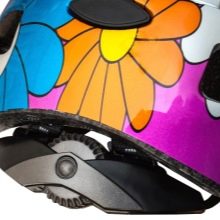
Classification
Helmets can be divided into several types. Gradation depends on the conditions in which the young cyclist will ride. When it comes to sports, its variety is taken into account. There are road helmets, cross-country and helmets for extreme disciplines.
Let's talk about them in more detail.
- Road helmet You can choose for those who plan to make long walks on a flat asphalt road. Its weight is 220 grams. Such products are most often purchased for children who ride along deserted tracks with their parents.
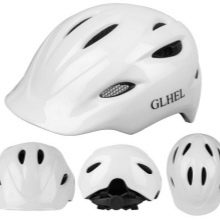
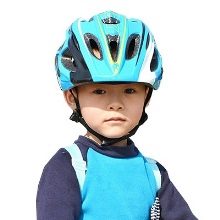
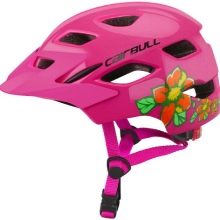
- The next variety are cross country walking helmets. It resembles the previous version, but the weight is slightly larger, which allows the young cyclist to move not only on a flat road, but also in the forest, on the field and country roads. Included are removable visors. This attribute is very important, as it helps protect the face from scratches if movement occurs through shrubs or tree branches. In addition, the visor holds goggles perfectly.


- Sometimes parents give their grown-up child in the section for extreme and off-road riding. In this situation, it is also assumed to perform fairly complex tricks, so the protection should be more reliable. Great for helmet for extreme disciplines. They are more durable and reliable, since in this situation, falls and bumps are almost inevitable. Among these bike helmets, there are bowler helmets and full face.
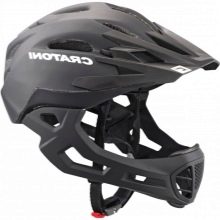
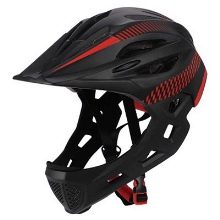
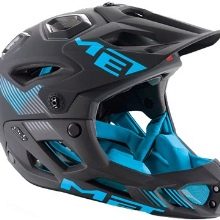
- The first category is for to protect the child’s head when it performs tricks on a hard surface. Usually their weight varies from 300 to 450 grams. This option is used mainly by adolescents. In addition, due to its specific form, it can lend itself well to customization, which is an additional advantage.
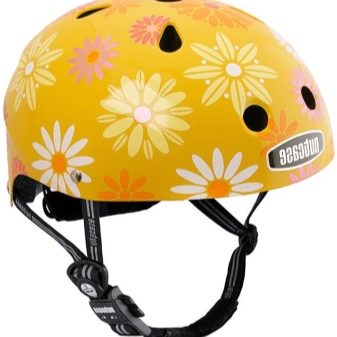

- Full face helmets protect not only the head, but also the face. With high-speed cross-country driving, this is important for both girls and boys. They are great for long descents on primers or for overcoming obstacles. We can say that the level of protection for these helmets is an order of magnitude higher than for all previous varieties. However, its mass is also large, and the review is limited, which prevents the use of the product for everyday driving around the city.
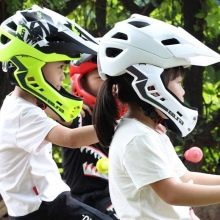


Reflective surface
This indicator is especially relevant if it is planned that the child will ride a bicycle in the evening. Walking before bedtime will be as safe as possible, since the young rider will be noticeably from afar even in those sections of the road where there is no lighting.
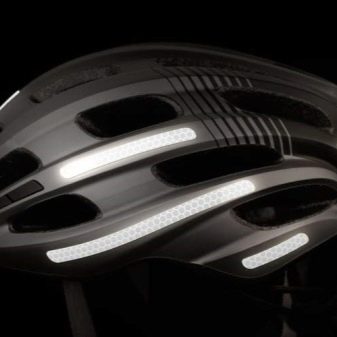
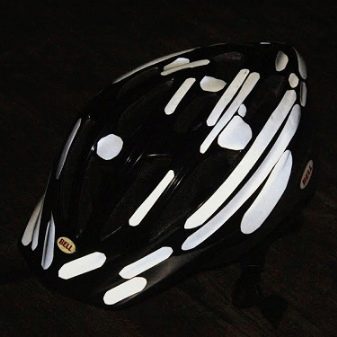
Mounts
Separately, we should talk about fixation systems. These are the very devices that allow the helmet to securely fix on the head of a small cyclist.
- The most popular among consumers is considered disk. It is a small disc located on a strap. During its rotation, the tension weakens or intensifies. This manipulation can be performed with one hand.
- The second system is called slider. It is equipped with simpler models. Here, for fixing, you will need to use both hands. There are other systems, but they are not common.
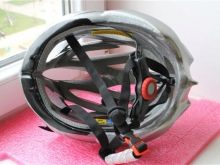
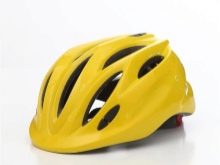

Purchase Rules
Choosing a helmet is not easy for a child who is 3-4 years old, or for a teenager. Parents worry that he is comfortable and meets all safety requirements. However, there are basic rules that should be followed.
- You should not purchase products from unknown manufacturers. The fact is that the level of protection of such products is in doubt. In addition, there is a risk that if dropped, the helmet will play a trick and will only increase the possibility of injury.
- It is worth paying attention to products that have a two-layer protective structure made on the basis of sturdy plastic. An additional advantage is soft padding. It is very good if it is made of natural material, which will protect the delicate baby skin from possible irritations, and will also help absorb moisture more effectively.
- It must be checked that the child's helmet has ventilation openings. This will help the baby ride a bicycle for a long time, even in the heat. If necessary, consider models with adjustable flaps. They fall in case of adverse weather conditions, and a closed helmet protects the head from rain or cold wind.
- An important factor is the size. The child should be as comfortable and comfortable as possible. It is worth checking the fastener adjusters, as well as its overall performance. The helmet must be securely fixed, without hanging out, without rolling down on the forehead, but without squeezing the head.
- If it is assumed that the child can move along the road, care should be taken to make the helmet as bright as possible. Acid shades attract attention well, respectively, a young cyclist will be noticeable to all participants in the movement. Reflective elements also perform an important function, the child will be clearly visible on the road even in the evening or in adverse weather conditions.

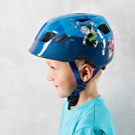
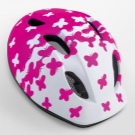
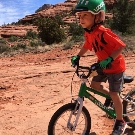
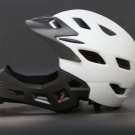
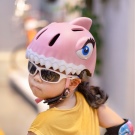
See how to choose the right kids bike helmet in the next video.










